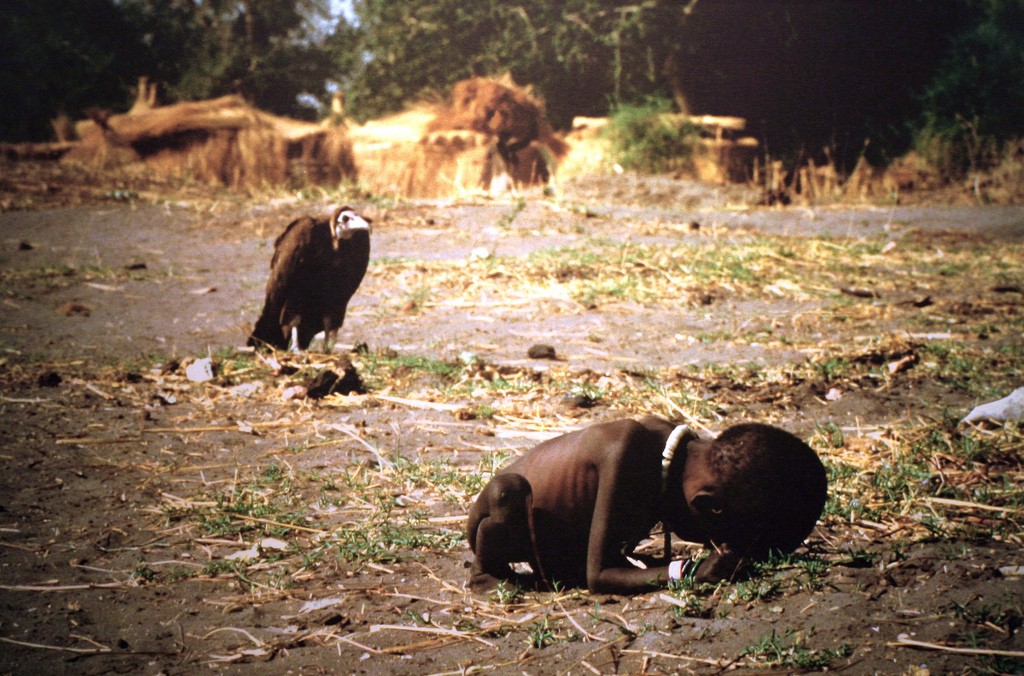Manipulation through image processing software is by no means the only factor contrary to the power of evidence that photographs or video footage possess.
All visual material can also be “processed” with lighting, exposure, framing and non-conventional framing of the subject. The photograph or video image, detached from the situation where it was captured, easily becomes a holistic representation of that situation, even though reality just outside the frame could be very different to what we see through the framing.
One way that visual journalism can drastically affect people’s worldviews is when repeated, recycled or stereotypical imagery starts to represent reality to its audience. This is especially a risk when tackling foreign news or news about topics that are very distant from their audience’s everyday life.
The photograph or video image, detached from the situation where it was captured, easily becomes a holistic representation of that situation.
If, for example, we repeatedly encounter in the media images or footage which portrays African guerrilla groups armed with Kalashnikovs conquering villages, our impression of the whole continent may be that it is war-like. This might then have very negative consequences, such as an increase in racism and xenophobia and a decrease in willingness to help charitably. To say the least, stereotypical images on the news narrow people’s worldviews.
Numerous other examples could also be named here. For example, lighting that creates a strong contrast may create a menacing atmosphere. Repeated unrepresentative photographs of politicians have an effect on their public image.
A few members of the audience at a concert may be squeezed into a tight frame to create an image of an arena that is packed with enthusiastic fans, resulting in a very different interpretation of the performing band’s success to that which a wider framing shot of all the empty spaces in the arena might give.
If we repeatedly encounter media images or footage which portrays African guerrilla groups armed with Kalashnikovs conquering villages, our impression of the whole continent may be that it is war-like.
The squeezing of masses of people is a continuous feature in media, even though it might be difficult to prove afterwards. For example, photography from riots and demonstrations often works this way. Even if in reality the riot were very local and, just 50 meters away, people were calmly going about their daily business, the photographs may give the impression of a state of emergency gripping the whole city.
These kind of framing choices are of course understandable since the aim of a news photo is to portray the topic of news, not the whole city. It is however also a question of mindful choices made by the photographer that can have effect on the interpretation of the event. Do they choose a telephoto lens to squeeze in and focus on the rioters, or a wide angle to reveal the surroundings and true scale of the riot?
Knowledge about surroundings and events happening before and after a single frame or even a video clip is never told by the end product.

With framing, subjects can be detached from their environment. The most famous example of the framing of a photograph is newspaper photographer Kevin Carter’s 1994 photograph of a starving toddler in the Sudan famine, stalked by a vulture. The photograph, which won the Pulitzer Prize, caused a massive debate about the responsibility of a photographer. The photograph was read as the final truth about the situation, and enraged citizens commanded the photographer to say why he did not help the child, but stalked the child like another vulture, this time with a camera.
The story goes, however, that the photograph was in fact the result of framing choices. The vulture was in fact about 10 meters from the child and only seemed to be much nearer due to use of telephoto optics that flattened the depth of the image. The story also goes that the mother of the child walked in front of the child and there were other people around as well. Whether or not this description of the situation is accurate, the bottom line is this: knowledge about surroundings and events happening before and after a single frame or even a video clip is never told by the end product, to the benefit or harm of the photographer.
The event took a tragic turn when Carter, who never fully recovered from the traumatic events he had witnessed as a war photographer, committed suicide in 1995.
Shouldn’t the Pulitzer-winning photograph have been taken at all, so the hands of the photographer would have been free to help one child?
It is good to return to this photo when thinking about the mission of a photographer as a journalist. Is it truly so that a photograph that shocked the world and made many people politically aware of the situation should not have been taken at all, so that the hands of the photographer would have been free to help one child?
Keep Reading:
The choice of topics affects our thinking; Tips: How to verify a photograph?
Go back to the beginning of this section.
This article was updated on January 13th 2020.




